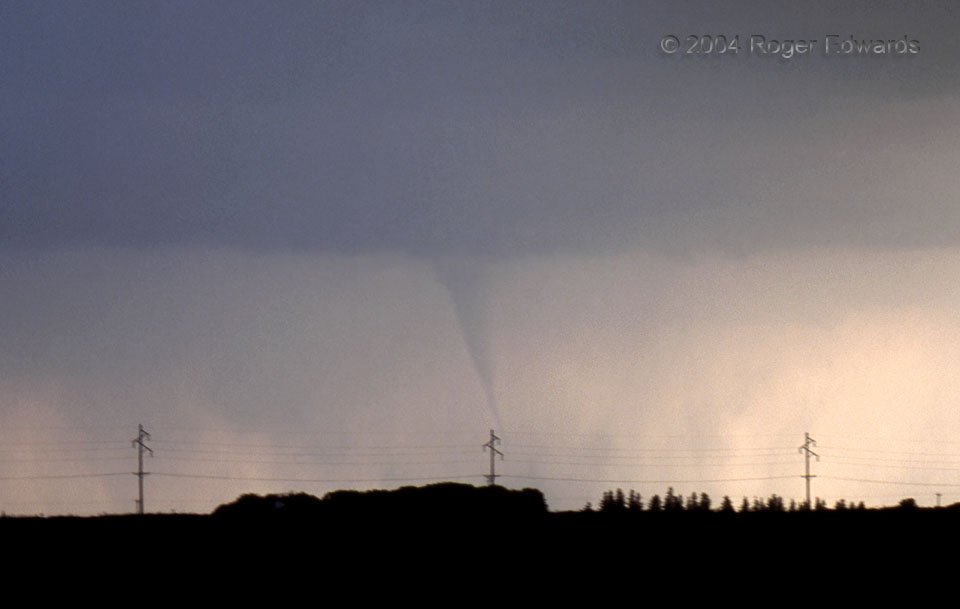
This tornado caught us somewhat by surprise. Instead of being spawned by a supercell of some sort, it developed near what was then the tail end of a squall line, as the line was “backbuilding” southwestward through constant formation of new cells. This process is called discrete propagation, and if the environment is just right (rich in boundary-layer cyclonic vorticity), can spawn such non-supercell tornadoes on rare occasion. The most notorious example of a tornado from discrete propagation or backbuilding was the F5 Jarrell, TX tornado of 27 May 97, which formed that way in a storm that later became a supercell as the tornado was in progress. Jarrell was the most extreme example, however. Most discrete-propagation events produce no tornadoes at all, and those that do form usually are not even as well-developed as the one in this film slide. Another cell, forming just to its SW, already was dumping rain around the tornado, which disappeared less than a minute later.
3 NW Duncombe IA (11 Jun 4) Looking SW
42.5158, -94.0205